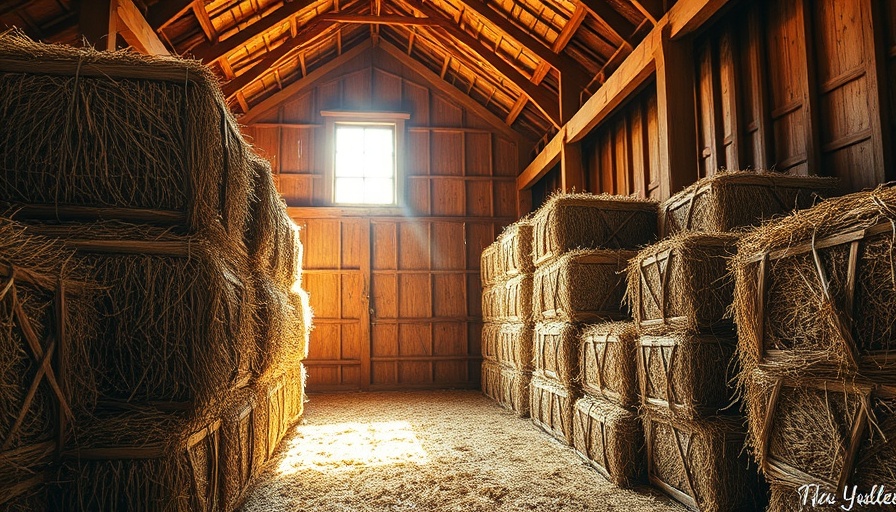
Preserving Livestock Health with Proper Hay Storage
As winter wanes, livestock owners must remain vigilant about their hay supplies. Properly stored bales of hay can mean the difference between optimal livestock health and costly waste. Late winter presents unique challenges that require careful attention, as issues with stored hay can escalate quickly if ignored.
The Unexpected Invaders: Pests in Your Hay Storage
Even the best-laid plans for hay storage can be compromised by unsuspecting pests. Animals such as rabbits, squirrels, and raccoons often seek refuge in hay barns, posing threats to your hay quality. A humorous but cautionary tale shared by one hay farmer illustrates this perfectly: a hapless rabbit exploited a tiny crack in the barn wall, resulting in a messy cleanup and potential hay spoilage. Regular checks can mitigate these risks, helping ensure your hay remains fresh and uncontaminated.
A Snowy Winter's Impact on Hay Storage
Heavy snowfall combined with high winds can lead to structural weaknesses in hay storage, allowing snow to infiltrate and potentially mold valuable bales. It's crucial to inspect your storage area after significant snowfalls to confirm there are no leaks or excessive frost buildup. Inadequate ventilation can also lead to moisture issues, emphasizing the importance of creating a well-insulated and properly ventilated storage space for hay.
Best Practices for Maintaining Hay Quality
According to experts, ensuring your hay remains in peak condition involves more than just a secure storage area. The choice of location for your hay barn is vital; it should be dry, well-ventilated, and easily accessible. Utilize pallets or gravel to create a stable base, preventing moisture seeping from the ground. Furthermore, employing strategic stacking techniques ensures adequate airflow, which can stave off mold and spoilage.
Concluding Thoughts: Vigilance Is Key
With the challenges posed by winter, maintaining the quality of hay is a shared responsibility for livestock owners. By staying proactive in monitoring hay conditions and employing best storage practices, you can guarantee your animals receive the best possible nutrition even as winter draws to a close. Remember, investing time and effort now can save you from headaches later in the season.
 Add Row
Add Row  Add
Add 




Write A Comment